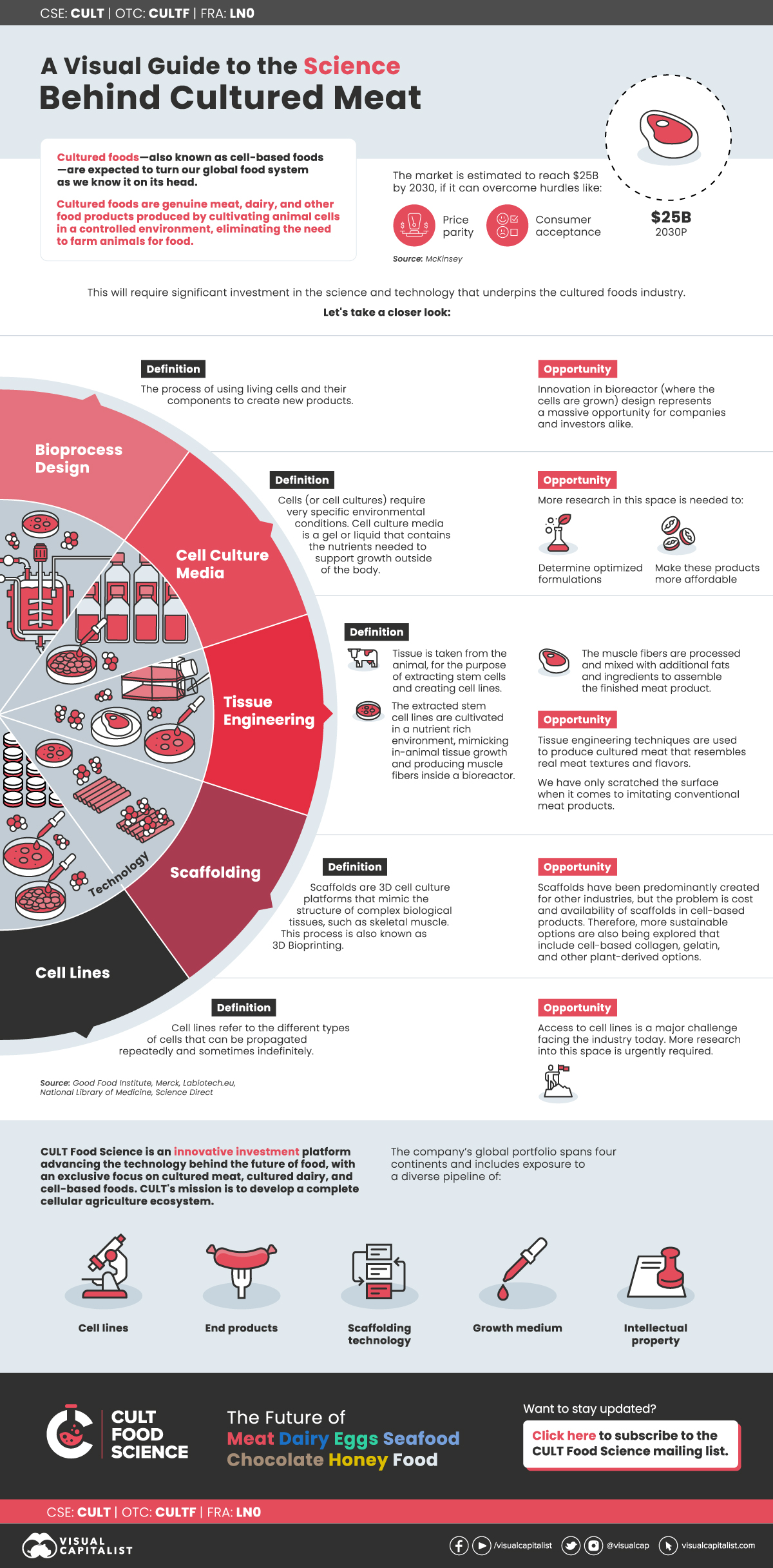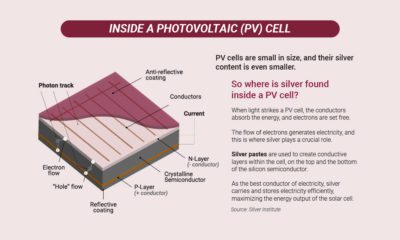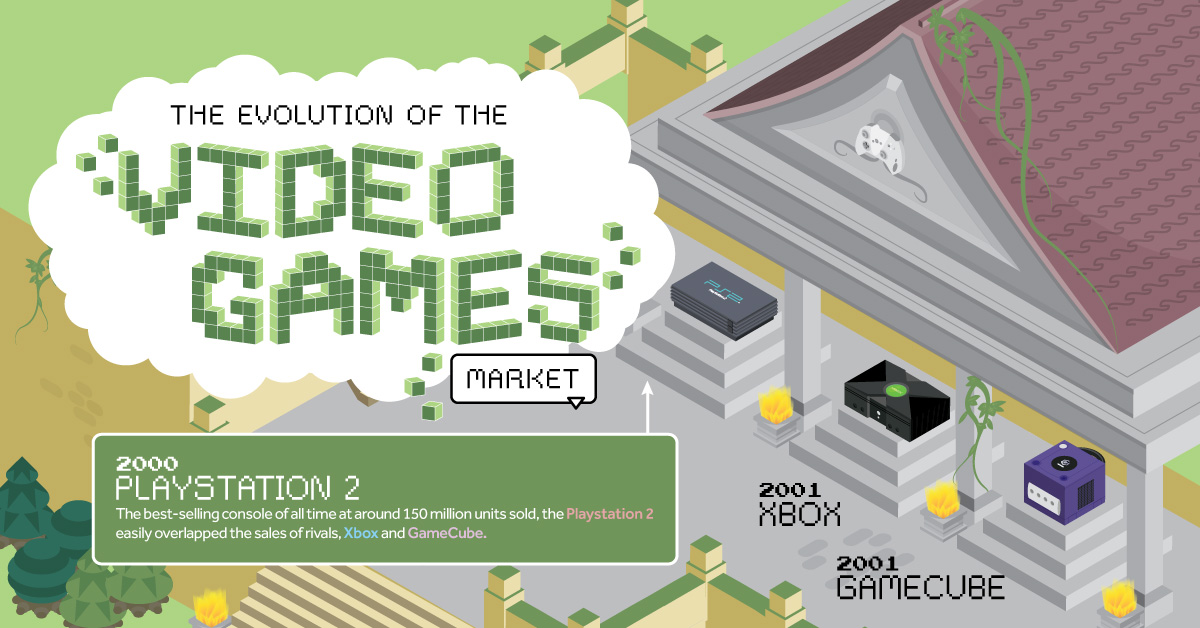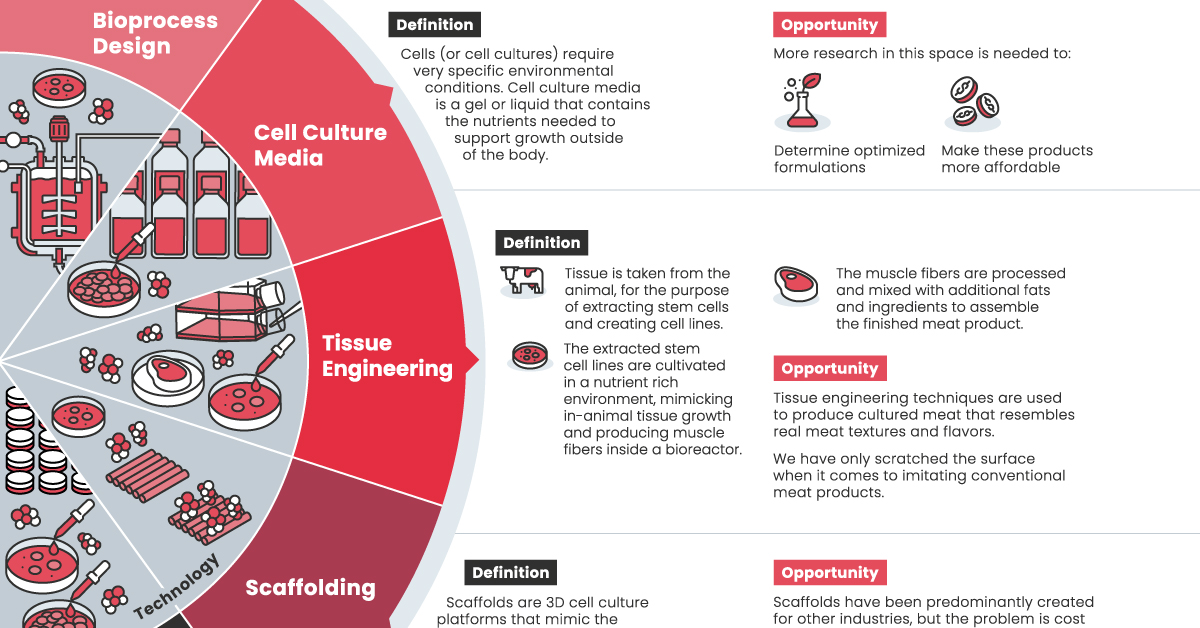A Visual Guide to the Science Behind Cultured Meat
The following content is sponsored by CULT Food Science (CSE: CULT)

A Visual Guide to the Science Behind Cultured Meat
Cultured foods—also known as cell-based foods—are expected to turn our global food system as we know it on its head.
In fact, the cultured meat market is estimated to reach an eye-watering $25 billion by 2030 according to McKinsey, but only if it can overcome hurdles such as price parity and consumer acceptance. To do so, significant innovation in the science behind these products will be crucial for the industry’s growth.
In the graphic above from our sponsor CULT Food Science, we provide a visual overview of some of the technologies behind the creation of cultured meat products.
What is Cultured Meat?
To start, cultured meat is defined as a genuine animal meat product that is created by cultivating animal cells in a controlled lab environment—eliminating the need to farm animals for food almost entirely.
“Cultured meat has all the same fat, muscles, and tendons as any animal…All this can be done with little or no greenhouse gas emissions, aside from the electricity you need to power the land where the process is done.”
—Bill Gates
Because cultured meat is made of the same cell types and structure found in animal tissue, the sensory and nutritional profiles are like-for-like. Let’s dive into how these products are made.
The Science and Technology Behind Cultured Meat
The main challenge facing the cultured meat market is producing products at scale. But thanks to the vast amount of research in the stem cell biology space, the science behind cultured foods is not entirely new.
Given that we are in the very early days of applying these learnings to producing food products, those looking to invest in companies contributing to the industry’s growth stand to benefit. Here is an overview of some of the technologies that underpin the industry that you should know:
1. Bioprocess Design
This is the process of using living cells and their components to create new products. According to experts like the Good Food Institute, bioprocess design holds the key to unlocking cultured meat production at scale.
Specifically, innovation in bioreactor (where the cells grow) design represents a massive opportunity for companies and investors alike.
2. Tissue Engineering
Tissue engineering techniques are used to produce cultured meat that resembles real meat textures and flavors. The first step is taking tissue from the animal for the purpose of extracting stem cells and creating cell lines.
The extracted stem cell lines are then cultivated in a nutrient rich environment, mimicking in-animal tissue growth and producing muscle fibers inside a bioreactor. The muscle fibers are processed and mixed with additional fats and ingredients to assemble the finished meat product.
3. Cell Lines
Cell lines refer to the different types of cells that can be propagated repeatedly and sometimes indefinitely.
Access to cell lines is a major challenge facing the industry today and is an area that requires significantly more research. This is because there is not just one cell type that can be used in cellular agriculture to produce cultured food products.
4. Cell Culture Media
Cells (or cell cultures) require very specific environmental conditions. Cell culture media is a gel or liquid that contains the nutrients needed to support growth outside of the body.
More research in this space is needed to determine optimized formulations and make these products more affordable.
5. Scaffolding
Scaffolds are 3D cell culture platforms that mimic the structure of complex biological tissues, such as skeletal muscle. This platforms can be created through the use of 3D Bioprinting.
Scaffolds are predominantly made up of collagen and gelatin. The problem is these are both animal-derived ingredients which defeats the purpose of cell-based products. Therefore, more sustainable plant-derived options are also being explored.
Investing in the Future of Cultured Meat
CULT Food Science is an innovative investment platform advancing the technology behind the future of food with an exclusive focus on cultured meat, cultured dairy, and cell-based foods.
The company’s global portfolio spans four continents and includes exposure to a diverse pipeline:
- Cell lines
- End products
- Scaffolding technology
- Growth medium
- Intellectual property
>>>Want to stay updated? Click here to subscribe to the CULT Food Science mailing list.
-

 Sponsored3 years ago
Sponsored3 years agoMore Than Precious: Silver’s Role in the New Energy Era (Part 3 of 3)
Long known as a precious metal, silver in solar and EV technologies will redefine its role and importance to a greener economy.
-

 Sponsored7 years ago
Sponsored7 years agoThe History and Evolution of the Video Games Market
Everything from Pong to the rise of mobile gaming and AR/VR. Learn about the $100 billion video games market in this giant infographic.
-

 Sponsored8 years ago
Sponsored8 years agoThe Extraordinary Raw Materials in an iPhone 6s
Over 700 million iPhones have now been sold, but the iPhone would not exist if it were not for the raw materials that make the technology...
-

 Sponsored8 years ago
Sponsored8 years agoThe Industrial Internet, and How It’s Revolutionizing Mining
The convergence of the global industrial sector with big data and the internet of things, or the Industrial Internet, will revolutionize how mining works.


